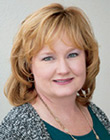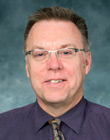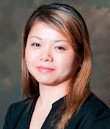Apr. 17, 2015
The world of research might seem far removed from daily practice in your medical imaging or radiation therapy department. In reality, much of what you do as an R.T. – from the way you approach your patients to how you deliver radiation or contrast – began as a researcher’s hunch.
The bridge between a hunch and the widespread use of a new medical imaging or radiation therapy treatment procedure or technique requires funding by radiologic science entities, including the ASRT Foundation. Since we began funding research grants in 1996, we’ve awarded more than $240,000 to researchers. In more ways than one, this research has contributed to new ways of thinking and performing in the radiologic sciences.
Sharing Knowledge
 Researchers often learn about the impact of their studies by word-of-mouth, said Laura Aaron, Ph.D., R.T.(R)(M)(QM), a radiologic science professor and director and graduate coordinator for the Division of Allied Health at Northwestern State University in Shreveport, La. In 2009, Laura received a grant from the ASRT Foundation to research academic honesty and professional behavior among students and faculty in nursing and the radiologic sciences.
Researchers often learn about the impact of their studies by word-of-mouth, said Laura Aaron, Ph.D., R.T.(R)(M)(QM), a radiologic science professor and director and graduate coordinator for the Division of Allied Health at Northwestern State University in Shreveport, La. In 2009, Laura received a grant from the ASRT Foundation to research academic honesty and professional behavior among students and faculty in nursing and the radiologic sciences.
“A lot of my research is related to education,” said Laura. “At conferences I’ve attended lately, people have told me, ‘Oh, I used your research for a research paper,’ or something beyond that.” This type of knowledge transfer demonstrates how the radiologic sciences can adopt evidence-based practices, said Laura.
Inspiring a New Generation
 Foundation grants made it possible for Ohio State University professor Kevin D. Evans, Ph.D., R.T.(R)(M)(BD), RDMS, RVS, FSDMS, to explore whether improvements could be made to sonographers’ practices. Kevin investigated whether a hand-held sonography unit would be effective in documenting occupational injuries among sonographers. He also studied the use of contrast to aid sonographers in documenting perineural blood flow within segments of the median nerve concentrate.
Foundation grants made it possible for Ohio State University professor Kevin D. Evans, Ph.D., R.T.(R)(M)(BD), RDMS, RVS, FSDMS, to explore whether improvements could be made to sonographers’ practices. Kevin investigated whether a hand-held sonography unit would be effective in documenting occupational injuries among sonographers. He also studied the use of contrast to aid sonographers in documenting perineural blood flow within segments of the median nerve concentrate.
The grant recipient pays it forward by encouraging his students to consider how a procedure or process might be improved. “I want to train the next generation of imaging scientists who can continue to add to the body of literature,” said Kevin.
Improving Patient Care
 A study by Jenny Soo, M.Ed., a radiation clinical educator for the British Columbia Cancer Agency - Vancouver Centre, is a real-world example of how research can influence patient care. Funded by a Foundation grant, Jenny and her research team studied the use of palliative radiation therapy in British Columbia. One direct outcome of the study, said Jenny, was a new radiation therapy clinic that addressed the needs of cancer patients in rural British Columbia.
A study by Jenny Soo, M.Ed., a radiation clinical educator for the British Columbia Cancer Agency - Vancouver Centre, is a real-world example of how research can influence patient care. Funded by a Foundation grant, Jenny and her research team studied the use of palliative radiation therapy in British Columbia. One direct outcome of the study, said Jenny, was a new radiation therapy clinic that addressed the needs of cancer patients in rural British Columbia.
If you peruse the grant recipient list from 1996 to the present, you’ll notice the research represents many practice areas. Chances are, you’ve read many of these study results in ASRT’s peer-reviewed journals, Radiologic Technology or Radiation Therapist, where Foundation grant recipients often publish their findings. Some of these study results might have affected practice in some way already.
Look for more vital research from Foundation grant recipients in the future, and don’t overlook peer-reviewed articles in the journals. Someday, while performing a new technique or procedure, you might be able to say, “I remember when this was just a hunch.”
This article was originally published in ASRT Scanner, Vol. 46, No. 2, Page 20.